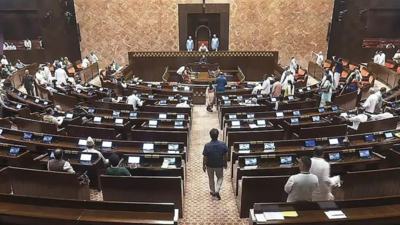Explained: India’s MBBS and PG seat boom what it means for future doctors

Medical education forms the backbone of India’s healthcare system, shaping the availability and quality of doctors nationwide. Over the past five years, the country has witnessed a significant expansion in both undergraduate (MBBS) and postgraduate (PG) seats. This growth prompts an important question: What does this surge in capacity mean for the quality, accessibility, and distribution of medical education?
Evolution of MBBS and PG seat capacity
The recent data presented in the Lok Sabha by the Ministry of Health and Family Welfare reveals a surprising increase in the medical seats. As per the data, India’s MBBS seats have grown from 83,275 in 2020–21 to 115,900 in 2024–25, representing a 39% increase. Postgraduate seats now total 53,960, with 30,029 in government and 23,931 in private institutions. Meanwhile, the National Medical Commission (NMC) expects around 8,000 additional UG and PG seats this academic year following college assessments, as reported by PTI.Major states such as Uttar Pradesh, Tamil Nadu, Karnataka, Maharashtra, and Gujarat have witnessed the sharpest growth, while smaller northeastern states including Arunachal Pradesh, Manipur, Nagaland, and Meghalaya have also expanded capacity to improve regional equity.State-wise growth trends in MBBS seats (2020–21 to 2024–25):
Source: Ministry of Health and Family Welfare This growth reflects a strategic focus on expanding capacity while improving regional equity.
Vacancy patterns amid capacity expansion
Despite this surge in capacity, thousands of MBBS seats remain unfilled in colleges outside AIIMS and JIPMER. For instance, the MoHFW data reveals that 2,012 seats were vacant in 2021–22, 4,146 in 2022–23, 2,959 in 2023–24, and 2,849 in 2024–25. These vacancies highlight that expansion alone does not guarantee optimal utilisation, as factors such as affordability, counselling complexities, and regional disparities influence seat allocation.High costs of private medical education limit access for candidates who miss out on government seats. Counselling processes at state and national levels are often complex and delayed, contributing to inefficient allocation. Students from marginalised or rural areas frequently lack guidance, while preference for established colleges leaves newer institutions struggling to attract applicants.
Regulatory and government initiatives supporting growth
The National Medical Commission (NMC) is working to ensure that quality keeps pace with quantity. The latest PTI report reveals that around 8,000 new UG and PG seats are expected this year, with inspections and accreditation strengthened to uphold faculty, infrastructure, and clinical resource standards. Innovative phydigital learning models are being developed to integrate practical skills with virtual education. Government programs, including the conversion of district and referral hospitals into medical colleges, PMSSY upgrades, and AIIMS expansion, aim to enhance infrastructure and access. Collaboration between private and government hospitals is also being explored to improve clinical exposure. Meanwhile, the National Exit Test (NExT) is being planned with stakeholder consultations to ensure smooth implementation.
Implications for medical education quality
The expansion of seats presents an opportunity to strengthen India’s healthcare workforce, but challenges remain. Ensuring high educational standards amid rapid growth, preparing students for frameworks like NExT, and strategically distributing doctors across urban and rural areas are key concerns. Integrating innovative teaching models and upgraded infrastructure can improve competency and uniformity in training.
The way forward
Maximising the benefits of expansion will require streamlined counselling and admission processes, enhanced financial support for economically weaker students, and stronger outreach programs in underserved regions. Improving the profile and appeal of emerging colleges, along with integrated efforts between government, institutions, and communities, will help ensure both quality and accessibility.With inputs from PTI.





